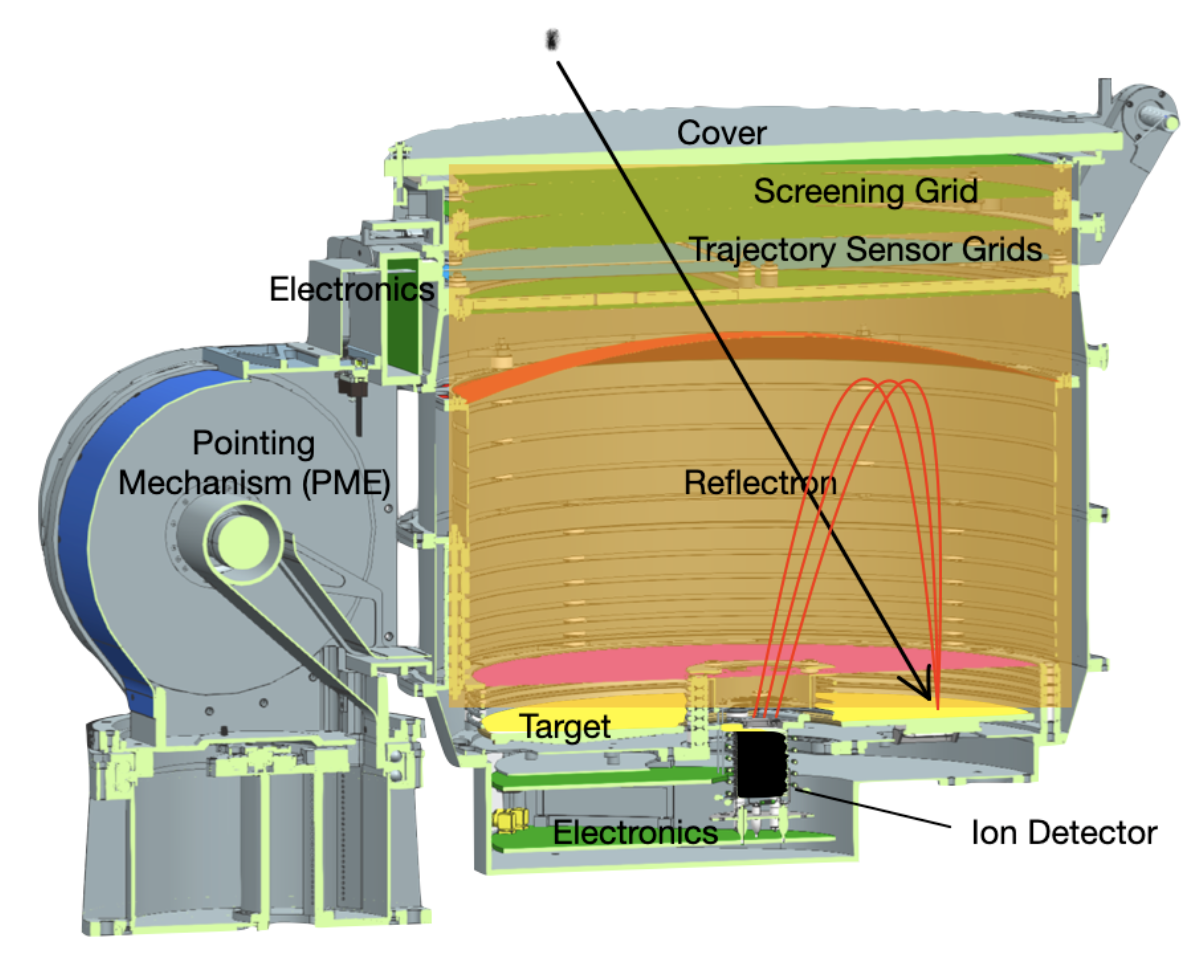Development of the Destiny+ Dust Telescope
- 1University of Stuttgart, Institute of Space Systems, Stuttgart, Germany
- 2von Hoerner & Sulger GmbH, Schwetzingen, Germany
Cosmic dust particles are important messengers. They contain information about their origin and their journey through space. The DESTINY+ mission that launches in 2024 provides the opportunity to investigate the dust populations present at 1 AU and around the active asteroid (3200) Phaethon. For this purpose, the Destiny+ Dust Analyzer (DDA) is employed. The instrument is developed under the lead of the University of Stuttgart in Germany. Its capabilities are to simultaneously analyze the dynamical and compositional properties of individual cosmic dust grains that are intersected along the mission. To gain independence from the S/C attitude a two axes pointing mechanism is developed. It provides an azimuthal range of 180° and an elevation range of 90°. The full instrument electronics is developed by the industry partner von Hoerner & Sulger GmbH in Schwetzingen, Germany while the software development takes place at the University of Stuttgart. The mass of the full instrument is ~12 kg and the power consumption is ~35 W in observation mode. The particle trajectory and grain size are determined by the trajectory sensor stage. It utilizes the fact that particles in space carry a surface charge. It consists out of a segmented plane of metal grids of which each is connected to a charge sensitive amplifier. This plane is sandwiched between two grids that are on ground potential. If a charged particle resides in between the grounded planes, it induces a mirror charge on the measurement grid segments. The incident angle, velocity and surface charge of the dust grains are reconstructed from the course and amplitude signal traces. An impact ionization time of flight mass spectrometer provides the compositional analysis of the dust grains. The sensor target is a gold surface with 300 cm² sensitive area and a field of view of 1.99 steradian. Particles collide with the sensor target with relative speeds of several km·s-1. At impact they ionize and the impact plasma is manipulated by electric fields. The cations are accelerated, reflected and focused towards an electron multiplier wich functions as an ion detector. Here the cations are detected with high temporal resolution at two sensitivity stages. This allows to identifie the presence cations in the atomic mass range of 1 – 800 u with a high dynamic range. In the relevant ion mass range of silicates, carbon and metals the mass resolution is high enough so separate the individual atomic species. As the mass spectrometer is highly sensitive to contamination the target can be heater for decontamination. A door cover protects the cleanliness of the sensor interior during launch. Additionaly to the mass spectrum the cation charge is measured by charge sensitive amplifiers at an ion grid in front of the multiplier aperture and an ion ring around it. The negative plasma charge is measured at the target. All signal channels are contiuously active and analyzed by an FPGA. A frame of the signal set is stored as soon as trigger conditions are met. This sensitive yet robust system allows to separate actual dust impacts from noise events. An uncompressed signal set from an individual impact event has a size of ~400 kbit and 2 Gbit non volatile ram is available for storage. Data processing is performed by a SAMRH71 from Microchip. Lossless and lossy compression algorithms are implemented for reducing the packet size for downlink. The talk will give an overview of the instrument functionality and design. We will present the development status and the results of first dust impact measurement will be presented, that are obtained by laboratory measurements with a dust accelerator.

Crossection cut through the DDA Sensor. Pointing mechanism and sensor head for measuring cosmic dust particles are depicted. A separate electronics box (not depicted) is located inside the S/C.
How to cite: Simolka, J., Bauer, M., Exle, A., Fröhlich, P., Gläser, J., Ingerl, S., Li, Y., Sommer, M., Strack, H., Henkel, H., Wagner, C., and Srama, R.: Development of the Destiny+ Dust Telescope, Europlanet Science Congress 2022, Granada, Spain, 18–23 Sep 2022, EPSC2022-1070, https://doi.org/10.5194/epsc2022-1070, 2022.

